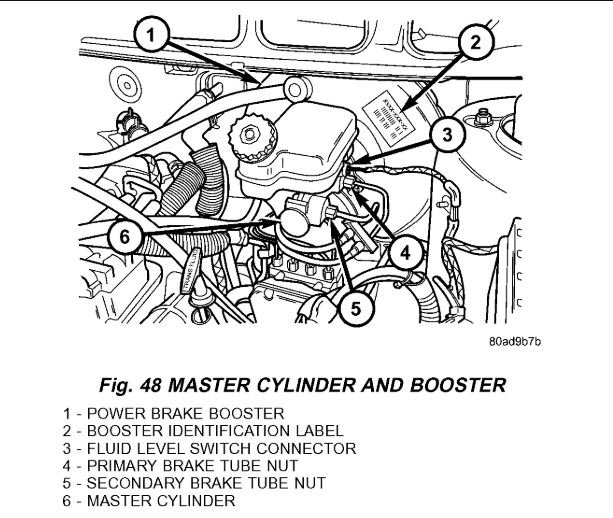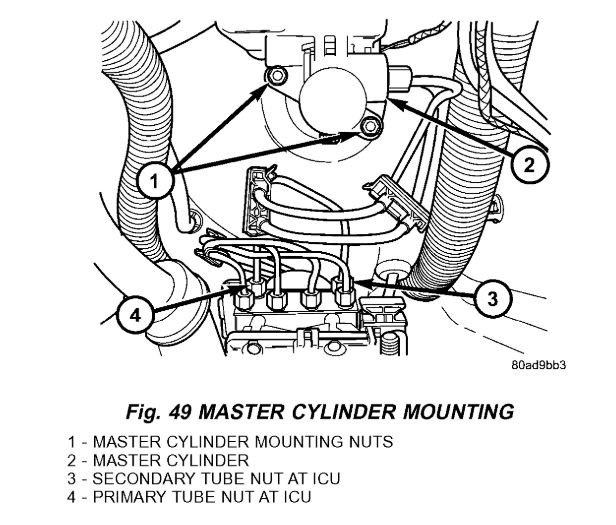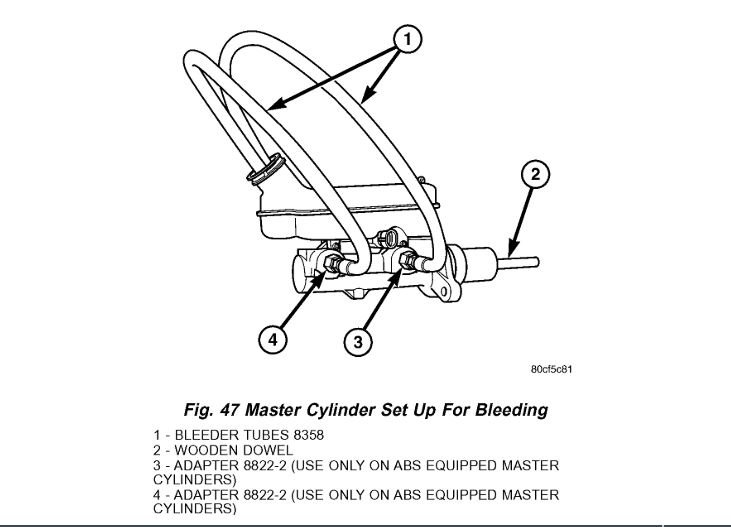Good morning,
This sounds like the master cylinder has failed and is not producing any pressure.
https://www.2carpros.com/articles/brake-pedal-goes-to-the-floor
https://www.2carpros.com/articles/how-to-replace-a-brake-master-cylinder
My question is why did he release the vehicle to you with no pedal?
Roy
STANDARD PROCEDURE - MASTER CYLINDER BLEEDING
CAUTION: When clamping master cylinder in vise, only clamp master cylinder by its mounting flange. Do not clamp master cylinder piston rod, reservoir, seal or body.
1. Clamp master cylinder in a vise.
NOTE: Use correct bleeder tubes when bleeding master cylinder. Master cylinder outlet ports vary in size and type depending on whether master cylinder is for a vehicle equipped with ABS or not. ABS equipped master cylinders require the additional use of ISO style flare adapters supplied in Special Tool Package 8822 to be used in conjunction with Bleeder Tubes, Special Tool Package 8358.
2. Attach special tools for bleeding master cylinder in the following fashion:
imageOpen In New TabZoom/Print
a. For non-ABS control equipped master cylinders, thread a Bleeder Tube, Special Tool 8358-1, into each outlet port. Tighten each tube to 17 Nm (145 inch lbs.) torque. Flex bleeder tubes and place open ends into mouth of fluid reservoir as far down as possible (Fig. 47).
b. For ABS equipped master cylinders, thread one Adapter, Special Tool 8822-2, in each outlet port. Tighten Adapters to 17 Nm (145 inch lbs.) torque. Next, thread a Bleeder Tube, Special Tool 8358-1, into each Adapter. Tighten each tube to 17 Nm (145 inch lbs.) torque. Flex bleeder tubes and place open ends into mouth of fluid reservoir as far down as possible (Fig. 47).
NOTE: Make sure open ends of bleeder tubes stay below surface of brake fluid once reservoir is filled to proper level.
3. Fill brake fluid reservoir with Mopar brake fluid or equivalent conforming to DOT 3 (DOT 4 and DOT 4+ are acceptable) specifications. Make sure fluid level is above tips of bleeder tubes in reservoir to ensure no air is ingested during bleeding.
4. Using a wooden dowel as a pushrod (Fig. 47), slowly depress master cylinder pistons, then release pressure, allowing pistons to return to released position. Repeat several times until all air bubbles are expelled. Make sure fluid level stays above tips of bleeder tubes in reservoir while bleeding.
5. Remove bleeder tubes from master cylinder outlet ports, then plug outlet ports and install fill cap on reservoir.
6. Remove master cylinder from vise.
7. Install master cylinder on vehicle.
Images (Click to make bigger)
Sunday, February 21st, 2021 AT 11:07 AM






